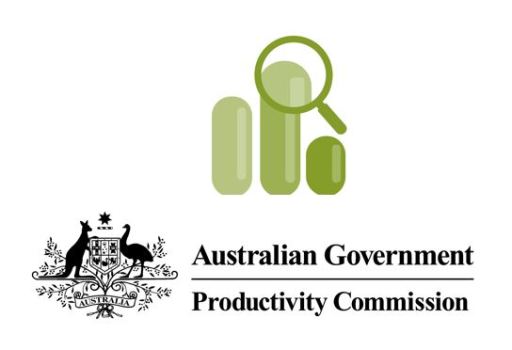The Productivity Commission’s Report on Government Services (RoGS) also covers Justice – Police, Courts and Corrective Services.
Total government expenditure for the justice services measured in RoGS was almost $16 billion in 2016-17, around 7.2 percent of total government expenditure on services. Police services were the largest contributor (65.4 percent of this amount), followed by corrective services (25.3 percent) and courts (9.3 percent). Nationally, expenditure per capita on justice services was $660 in 2016-17.
The RoGS Justice section is available here.
A key measure used by RoGS across this sector is the reoffence rate. In most jurisdictions this means the proportion of people back in jail within two years of leaving it.
In 2016-17, 44.8 percent of prisoners released in 2014-15 returned to prison within two years and 53.4 percent returned to corrective services (prison or community corrections). Nationally, these rates have increased over the last five years.
This would seem to indicate that prison is not an effective deterrent, or at least that Corrective Services do not ‘correct’. But the report points out that it also been an effect of higher policing rates. Because the time period measured is comparatively small, many more people may reoffend beyond the two-year limit.
Police Services
In 2016‑17 there were 72,680 police staff across Australia, 92.0 percent of who were in operational roles This equates to 274 police per 100, 000 people. Total recurrent expenditure was $10.9 billion. Just over 30 percent were female, a figure broadly consistent across all jurisdictions.
Across Australia, the proportion of Magistrates’ Court adjudicated defendants resulting in a guilty plea or finding was 98.1 percent, a very high figure. Community satisfaction with police was also high, at around 80 percent (the figure was a little higher people who had had contact with the police in the previous 12 months. A similar number of people believe the police treat people fairly and equally.
An important metric in the report is the proportion of reported offences that result in police proceedings. Homicide and armed robbery have very high clearance rates, above 90 percent. Your car is more than twice as likely to be stolen in Victoria and New South Wales, but you also have a much higher chance of getting it back in Victoria. Break-in rates are highest in Western Australia and the Northern Territory.
One interesting measure is the proportion of the population who believe that various crimes are a problem in their neighbourhood. Around half of population is fearful of illegal drugs and two thirds say speed or dangerous driving is a problem. The numbers are very consistent across jurisdictions.
Courts
Total court administration recurrent expenditure less income (excluding fines) by court authorities across Australia was approximately $1.4 billion in 2016-17, comprising $1.2 billion for the State and Territory courts and $214.6 million for the Australian courts.
In 2016-17, in the criminal jurisdiction of the supreme, district and county, magistrates’ and children’s courts, 825,202 cases were lodged, and 864 923 cases were finalised. In the civil jurisdiction of these same courts approximately 436,333 cases were lodged and 440,523 cases finalised. In the Australian courts, approximately 121,961 cases were lodged, and 117,027 cases finalised.
Court metrics in RoGS include number of judicial officers per capita, court backlogs, disposals (the age of cases which have been finalised), attendance rates, clearance rates, and cost per finalisation.
These all vary significantly by jurisdiction, and it is hard to generalise on which states and territories have the more efficient court systems. But the wide variation indicates there is significant room for improvement in many areas.
Corrective Services
In 2016-17, an average of 40, 059 people per day were held in Australian prisons, of which 8.1 percent were female and 27.6 percent were Aboriginal and Torres Strait Islanders.
Nationally, corrective services agencies operated 114 custodial facilities at 30 June 2017. Community corrections is responsible for a range of non-custodial sanctions and also manages prisoners who are released into the community and continue to be subject to corrective services supervision.
In 2016-17, an average of 68,110 offenders per day were serving community corrections orders, of which 19.1 percent were female and 20.1 percent were Aboriginal and Torres Strait Islander offenders.
Nationally in 2016-17, net operating expenditure on corrective services including depreciation was $4.1 billion, a real increase of 7.2 percent from the previous year. Imprisonment rates are increasing, in every jurisdiction.
The report pays special attention to the Aboriginal and Torres Strait Islander population. The national imprisonment rate per 100,000 for Aboriginal and Torres Strait Islander population was 2,411.5 in 2016‑17, compared with a rate of 156.6 for the non-indigenous population. Imprisonment rates the Northern Territory, which has a much higher proportion of indigenous people, were much higher than the rest of the country. Indigenous prisoners are also much younger than the national average.
Key Performance Indicators examined in the report include proportion of in education and training, proportion employed (around two thirds nationally), time out of cells, prison utilisation (most prisons are over capacity), deaths in custody, assaults, cost per prisoner, and escapes.
It is not a pretty picture. Australian prisons are overcrowded, even as re-offence rates are rising. Something is not working.
Comment below to have your say on this story.
If you have a news story or tip-off, get in touch at editorial@governmentnews.com.au.
Sign up to the Government News newsletter

